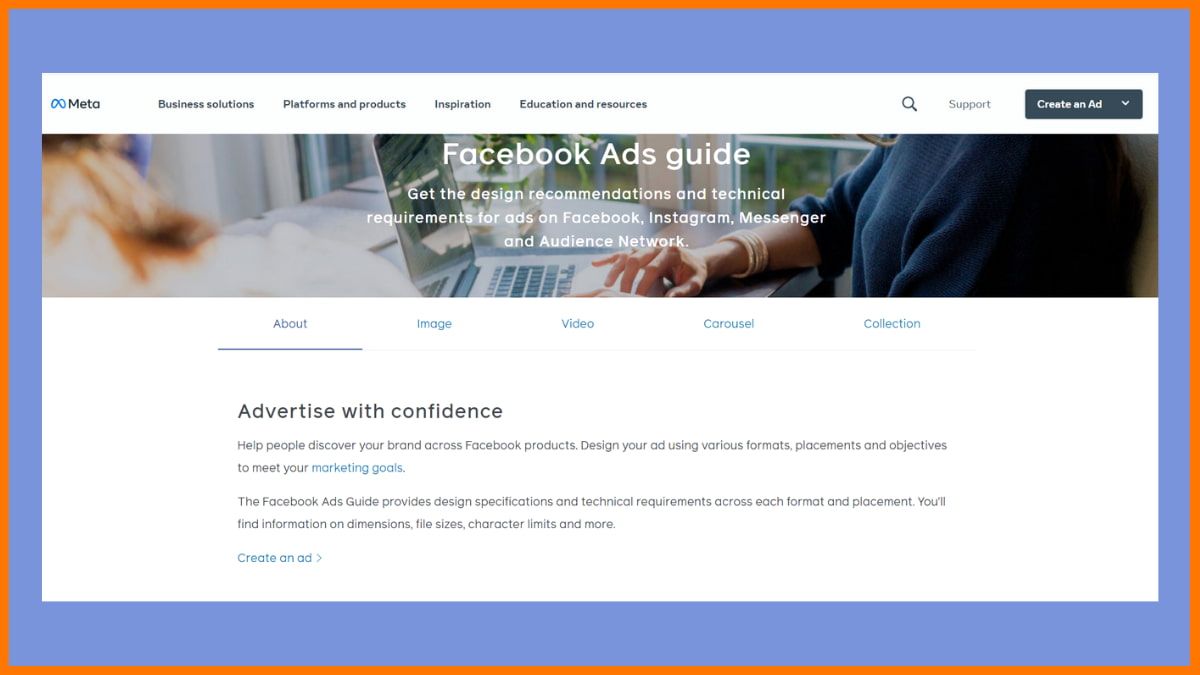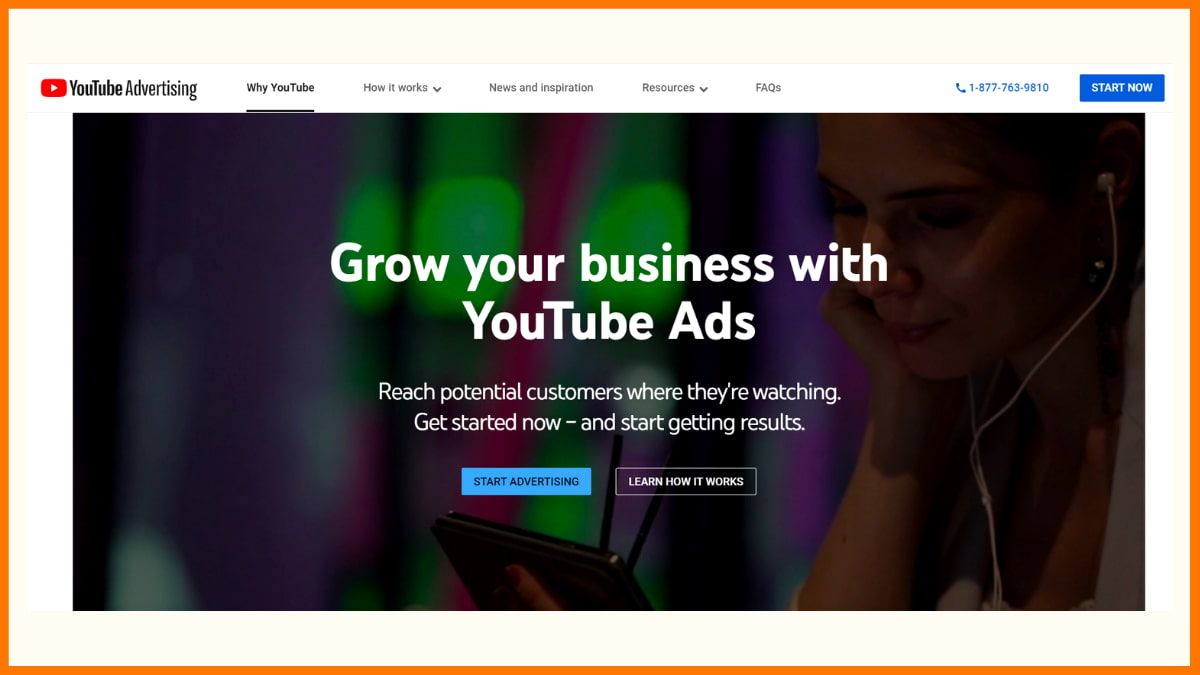Google Ads is the leading Google advertisement platform, allowing businesses and individuals to advertise their products, services, or brands on Google Search, YouTube, partner sites, and mobile sites. It was launched in 2000 and functions mostly in a PPC mode, although CPM and CPE pricing means are also offered to campaigns with such goals. Advertisers will bid on keywords: Google then holds an auction to compare ad bids against a Quality Score, which factors in an ad’s relevance, its expected click-through rate, and experience with the landing page. Ads can be run on a variety of formats, including search ads, display ads, video ads, shopping ads, and app promotion ads.
Ads give advertisers a certain amount of control, which allows flexible budgeting, and no minimum spend, and real-time campaign adjustments. With great reach and extensive targeting options, this ad platform can establish connections for businesses with users actively searching for related offerings, thereby enhancing chances for conversions. Detailed performance analytics break down the clicks, impressions, and ROI. Geo-targeting and intent-based campaigns may probably get a user’s attention, which brings even higher conversion.
Earning from Google Ads
The primary revenue stream through which Google Ads operates is the Google AdSense platform, which helps website owners and content creators monetize their platforms by inserting targeted ads. After an AdSense account is established and linked to the site in question, publishers are allowed to monetize their sites by allowing Google to run ads selected by the AI for maximum profits. Revenue comes from the ad auctions wherein advertisers bid to display their ads, and publishers earn money on a per-click (CPC) or per-impression (CPM) basis. The earnings differ based on content type, audience, and market demand. Google deducts a commission from publishers before they can receive any payout, and there is a minimum threshold before any payout.
Brand Tap-in
Using your competitor’s brand name in your keywords may appear audacious, but it’s savvy. Those searching for brand names often come with a heavy purchase intent- they’ve researched almost everything before getting to buy. Instead of going for the broad industry keywords, bid on your top-most competitor’s brand terms- your brand sits right there before a motivated buyer and exploits gaps within the offerings of the rival. Even if users are already swinging toward another brand, your ad can instill doubt or spark curiosity or offer a compelling alternative. Clever copy can redirect them to your landing page. Just remember, though, that as everyone does this, the cost will go up as competition increases.

Include Keyword Errors
This is also regarded as traffic stealing, where you use misspelled names of brands or products to draw in potential customers. The term “fat finger fumble” is frequently used. You could place your bids on well-known typos and thus capture searches made by users who accidentally mistype a keyword. Thus, you can very cleverly appear at the top while paying less, as typo keywords generally do not have much competition. Free keyword typo tools can help find the most common misspellings to focus on. Just keep in mind that most search engines recognize these types of errors and would practically auto-correct or suggest the correct term to give fewer click-throughs.
Build Awareness with First-time Visitors
This sales funnel presents opportunities on both ends of the search spectrum. Certainly, it concentrates on the more high-converting, expensive, high-intent-phrase keywords in terms of advertising, but it also allows you to think about more general, lower-intent phrases that bring users into their journey early on. They may not always buy, but you always get the chance to present your brand and its offering. The success of the transition down the funnel relies on having a sufficiently strong process of nurturing. You’ll be able to catch this audience with broader keywords, and the keyword-generation free tools will help identify them. However, note that it usually takes longer to convert from this group.

Develop Landing Pages Tailored to Your Audience
This may sound like a basic concept, but many ads still send clicks to a landing page that seems completely disconnected from what was promised. When users do have time to search for something, they expect the page they get after clicking to deliver on the statements made by the ad and, even more, to provide an instant solution. Therefore, for landing pages to begin delivering on their promise of ad text, they should repeat major points, have the same keywords, and present a strong and clear call to action. Such alignment will increase both click and conversion rates while simultaneously lowering your cost per click (CPC).
Exclude Irrelevant Searches
Search engines want to show ads relevant to the search queries; however, some cases of imperfect matches slip through. You wouldn’t want irrelevant users whom you pay per click to ruin your marketing budget. For instance, if you sell adult shoes for running, a parent looking for kids’ shoes wouldn’t work for you. Negative keywords like “kids,” “children,” or “small sizes” can filter out unqualified traffic. This increases the ad’s relevance, saves on costs, and increases your quality score, which then goes toward better ranking and lower PPC costs. The one disadvantage is the time it takes to set up and maintain the lists, but the benefits in the long run are worth the effort.
SEO Still Matters
Unpaid search visibility is derived from an all-around SEO strategy and high-quality keyword-optimized content. The critical factor to climb search rankings is selecting the right keywords. If combined with PPC efforts, it builds long-term momentum with Google because consistent value is found in your content and the advertisements you are running. Use tools like Google Ads to find out which keywords perform the best and apply those findings to organic content. Over time, such a synergy will enhance visibility and free up traffic. Scoring Google#1 earns you almost 40% CTR, which is double that of the second place. The catch? SEO takes a long time – results often take months to achieve.
Make It Viral-Ready
Google Ads don’t have to be boring; you can get creative and aim for viral. One tactic is using hyper-targeted long-tail keywords with low search volume to be seen. Another is to capitalize on trending events or hot-button topics in your industry. Then there’s video content, which can be leveraged for maximum engagement and audience targeting when included in your ad strategy. If done right, these creative and timely ads easily pique interest, get shares, and help immensely with brand awareness for stellar ROI. Going viral, however, is not as easy competition will be brutal, especially for high-volume keywords, and a low-quality score from Google can work against your ad being seen.
Level Up Your Ads with Extensions
Ad extensions, which are found at Google, simply give you the ability to append additional information along with your text ads, thus enabling target much better advertisement campaigns. Without any charge and easy integration, price extensions display products or services with exact prices, linking directly with your site. There can be special offers or free giveaways. Message extensions will allow people to text you directly, with a cost of the same cost as a click. Callout extensions can be personalized based on time using options such as delivery estimates or limiting live chat hours. Although extensions provide great value, the fact remains that Google Analytics does not register messaging use. Not all ads may require callout scheduling.
Zero In on Your Audience’s Location
It is more effective to geotarget your paid ads for your budget to be spent on the specific locations from which the customers are coming. Bids can also be adjusted according to the time of year and weather conditions for more details. The setup of the geotargeting is simple. Go to your Google campaign. Click on the Settings tab, and under Locations and Languages, edit the location section. From here, you may choose to add, exclude, or target around areas. Geotargeting makes sure that the ads are reaching the right market, which means that the message becomes more relevant and yields better ROI, especially for local business organizations like restaurants.
Become a Freelance Google Ads Expert
The process of hiring yourself out as a Google Ads expert should begin with the mastery of Google Ads through each appropriate Google Skillshop application or paid course on the internet, focusing on campaign types, bidding strategies, and ad formats. Being certified under Google Ads (Search, Display, Measurement) would further endorse your capabilities. Participating in an agency or internship provides hands-on experience that prepares you for running real campaigns, analyzing metrics, and optimizing budgets. Carrying out campaign initiatives, a person will be able to test ideas and build a portfolio. Additional skills that can markedly improve campaign performance include data analysis, copywriting, and client communication.
Afterward, developing credibility requires you to build your portfolio with successful case studies and testimonials from clients. Start getting gigs through freelance job platforms like Upwork or Fiverr, and check for opportunities to engage in cold outreach to small businesses. Having a specialized niche, i.e., e-commerce or local businesses, will help with visibility. Stay updated on trends of AI, automation, and privacy policies. Deliver measurable ROI and you’ll keep clients, grow, and thrive in the industry.

Conclusion
Google Ads is a way of earning money by placing advertisements strategically on digital content, ranging from websites, blogs, and apps to YouTube channels. Earnings are generated from clicks or impressions. For maximum profit, always create high-quality content that engages readers, which will generate organic traffic toward your sites targeting high-paying keywords. Ad positioning should be optimized above the fold and with ad types that have high click-through rates, such as sticky or interactive ads. Integration with Google AdSense accounts and Google Analytics helps you keep an eye on your performance and tweak your strategies. Google’s policy should always be strictly followed to avoid getting any penalties. Explore other monetizing avenues; try out different ad placements for more earnings.
FAQs
How does Google Ads work?
Google Ads works by showing your ads to people when they search for keywords related to your business. You pay when someone clicks on your ad (Pay-Per-Click). It helps bring more visitors to your website.
What is CPC in Google Ads?
CPC (Cost Per Click) in Google Ads is the amount you pay each time someone clicks on your ad. It’s a key part of the Pay-Per-Click (PPC) model and helps control your ad budget.
What are keywords in Google Ads?
In Google Ads, keywords are words or phrases that advertisers select to target their ads to the right audience. When users search for these keywords, relevant ads may appear.




























































